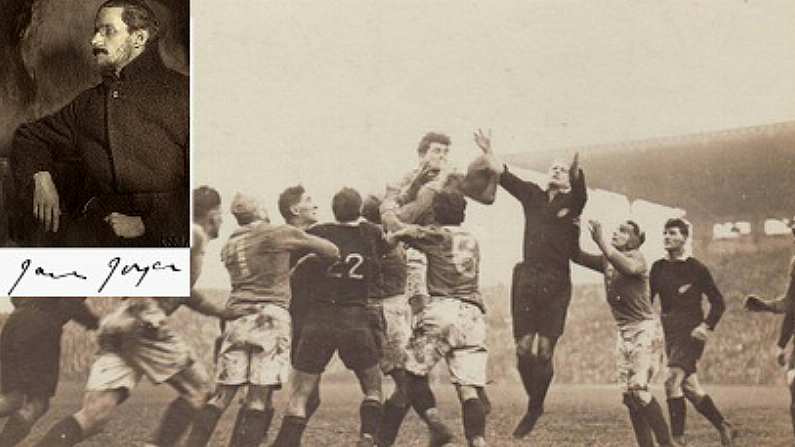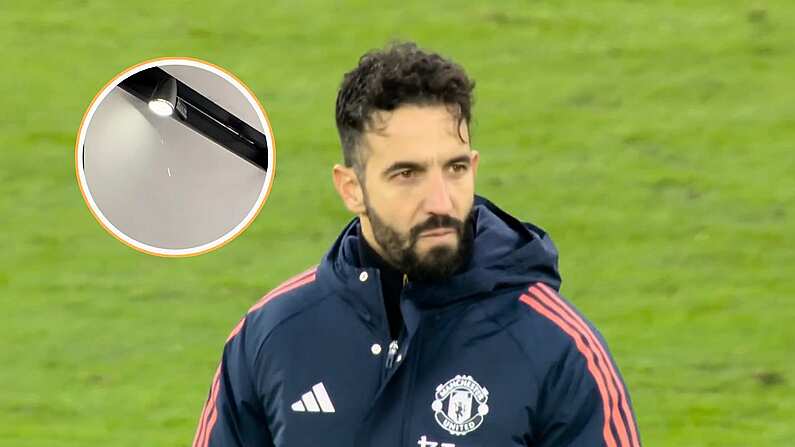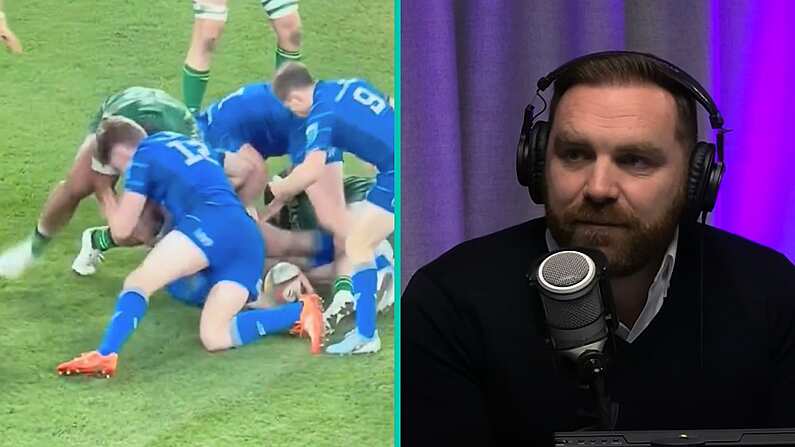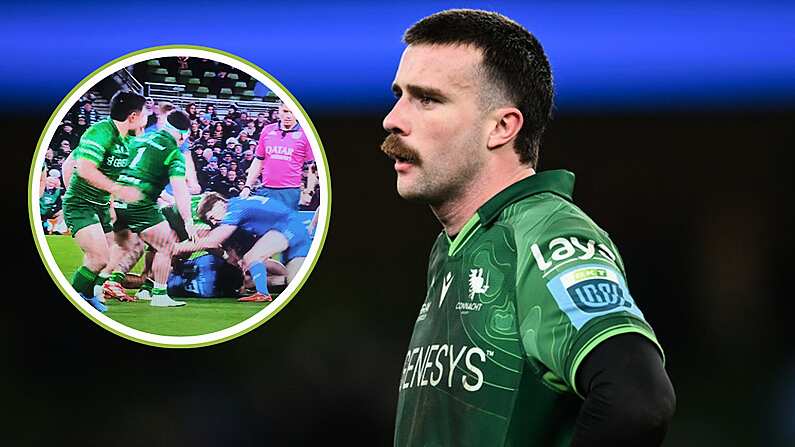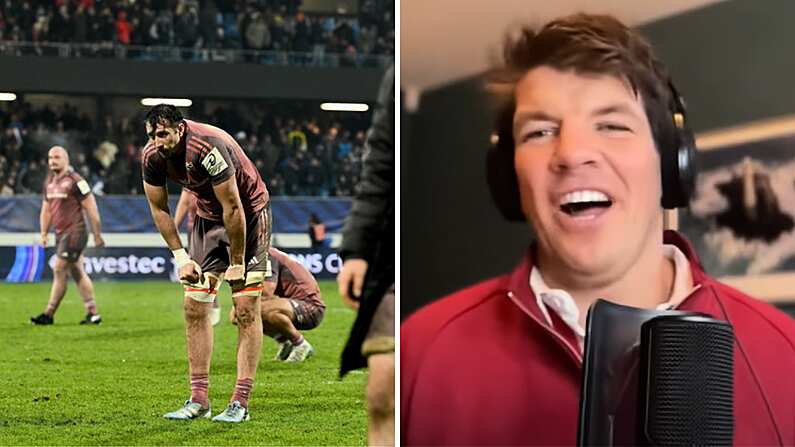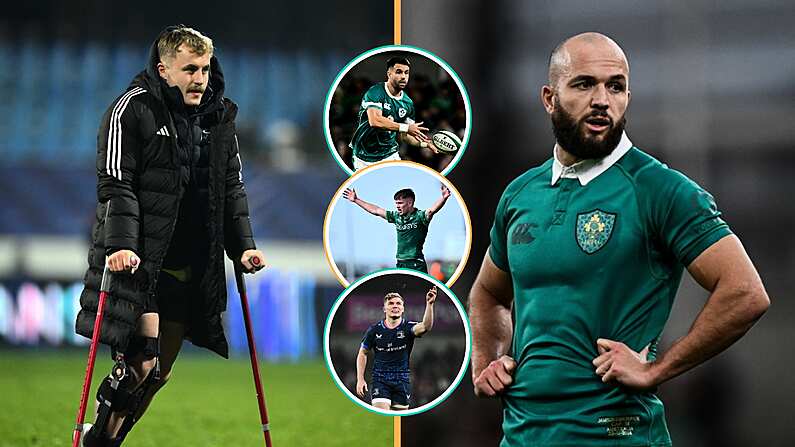The James Joyce aficionado site From Swerve of Shore to Bend of Bay bring us the intriguing news that James Joyce was a serious rugby fan. We already know that Samuel Beckett was quite the rugby fan and proclaimed Ollie Campbell to be genius. And, as poet John Montague detailed in his obituary of Beckett in 1989, Beckett spied an Ollie Campbell/ Johnny Sexton like quality to the 'half-blind' author of Ulysses.
I watched once as a crafty journalist, seeking his confidence, lightly mentioned that he had played rugby with Ollie Campbell. Beckett's eyes lit up, and all the weary embarrassment vanished. 'Do you really know Campbell?' he said excitedly. 'What's he like?'
My cunning confrere confided that no more modest humble man ever pulled on rugby boot. 'He's a genius!' cried Beckett. 'But you're not supposed to have a television,' I reminded Sam. 'You're supposed to be against all that.' 'Only for the games,' was his furtive apology, 'and only when the Irish play.'
But the journalist had the hook in, and soon Sam was discussing with him a rugby team of Irish writers. Spoilers like O'Flaherty were easy to place, but the half-blind Joyce was a problem, and Beckett would not relegate his old master to the bench. 'Very crafty, very nippy, try him at fly-half. He might surprise you when the light is fading.'
Well, now the word comes that James Joyce was another in a long line of artistic Irish rugby fans. (Richard Harris and Spike Milligan being a couple of others). When Ireland played France at Colombes Stadium in 1923, Joyce wouldn't have missed it for anything. In fact, between 1923 and 1931, Joyce rarely missed an Irish game in France. He missed every game in Lansdowne Road in the period, never having set foot in the country after 1912.
Joyce memorised the entire 1923 Ireland team and when asked by Bective Rangers player and old UCD friend, William Fallon, how he had come to see the match, Joyce simply responded,
"I had to go see the boys in green jerseys."
Ireland lost the 1923 game, on a scoreline of 14 - 8 but won every subsequent match in France in the 1920s. Another big game that Joyce showed up at in Stade Colombes was the visit of the New Zealand Invincibles of 1925. Joyce was particularly excited by the Haka and incorporated it into his novel Finnegans Wake.
Let us propel us for the frey of the fray! Us, us, beraddy!
Ko Niutirenis hauru leish! A lala! Ko Niutirenis haururu laleish! Ala lala! The Wullingthund sturm is breaking. The sound of maormaoring The Wellingthund sturm waxes fuercilier. The whackawhacks of the sturm. Katu te ihis ihis! Katu te wana wana! The strength of the rawshorn generand is known throughout the world. Let us say if we may what a weeny wukeleen can do.
Au! Au! Aue! Ha! Heish! A lala!
As one can clearly see from that extract above (one of the most accessible passages of prose in Finnegans Wake), Joyce is patently alluding to the New Zealand Haka there. The whole passage evokes images of Colin Meads and Sean Fitzpatrick and Tana Umaga furiously slapping their thighs and beating their chests.

